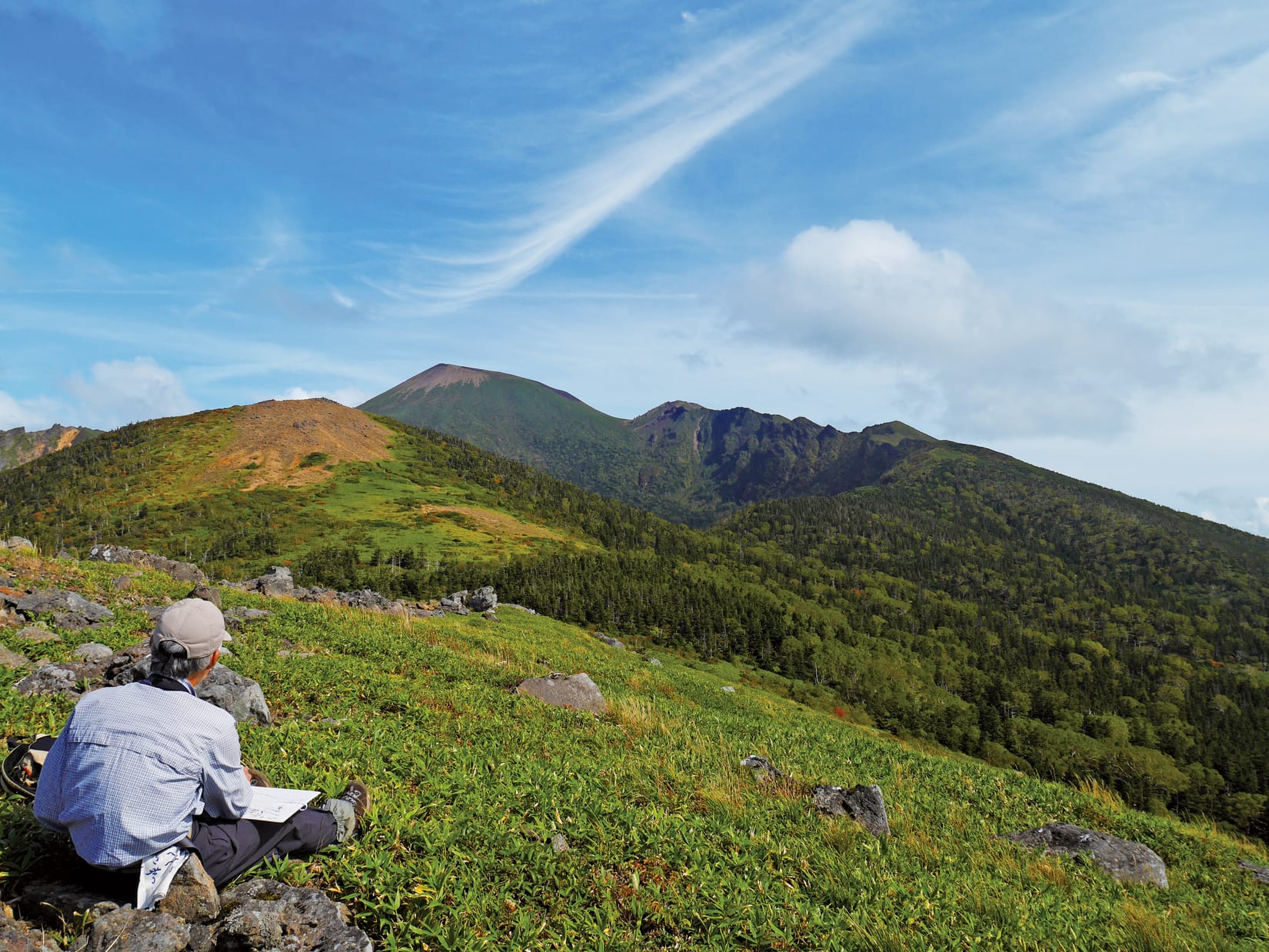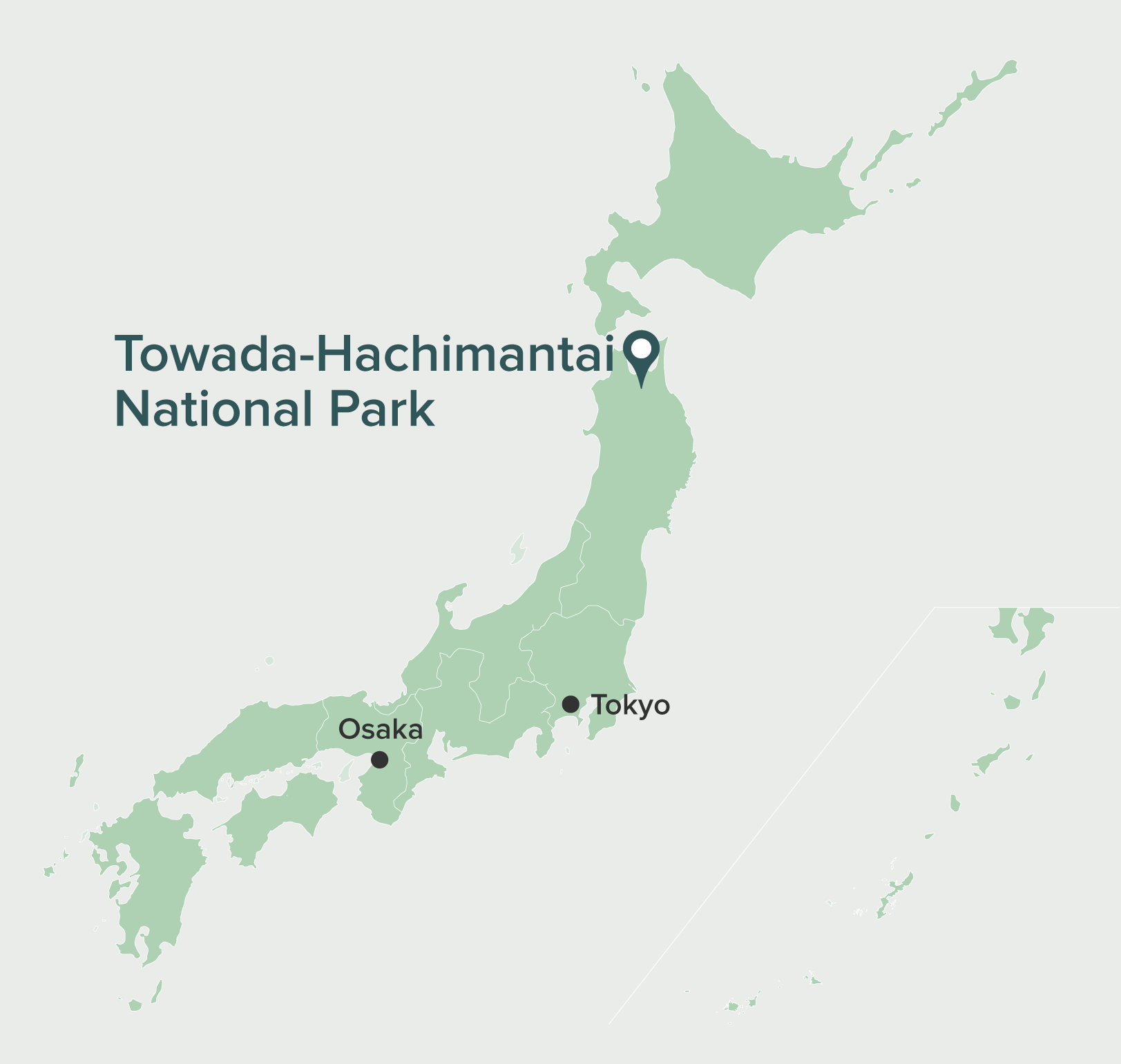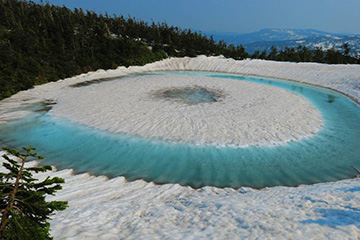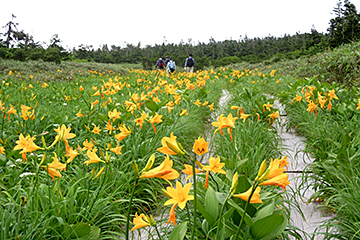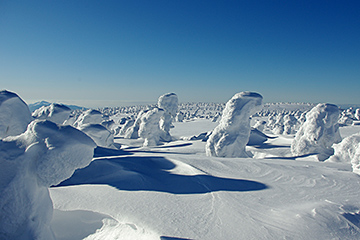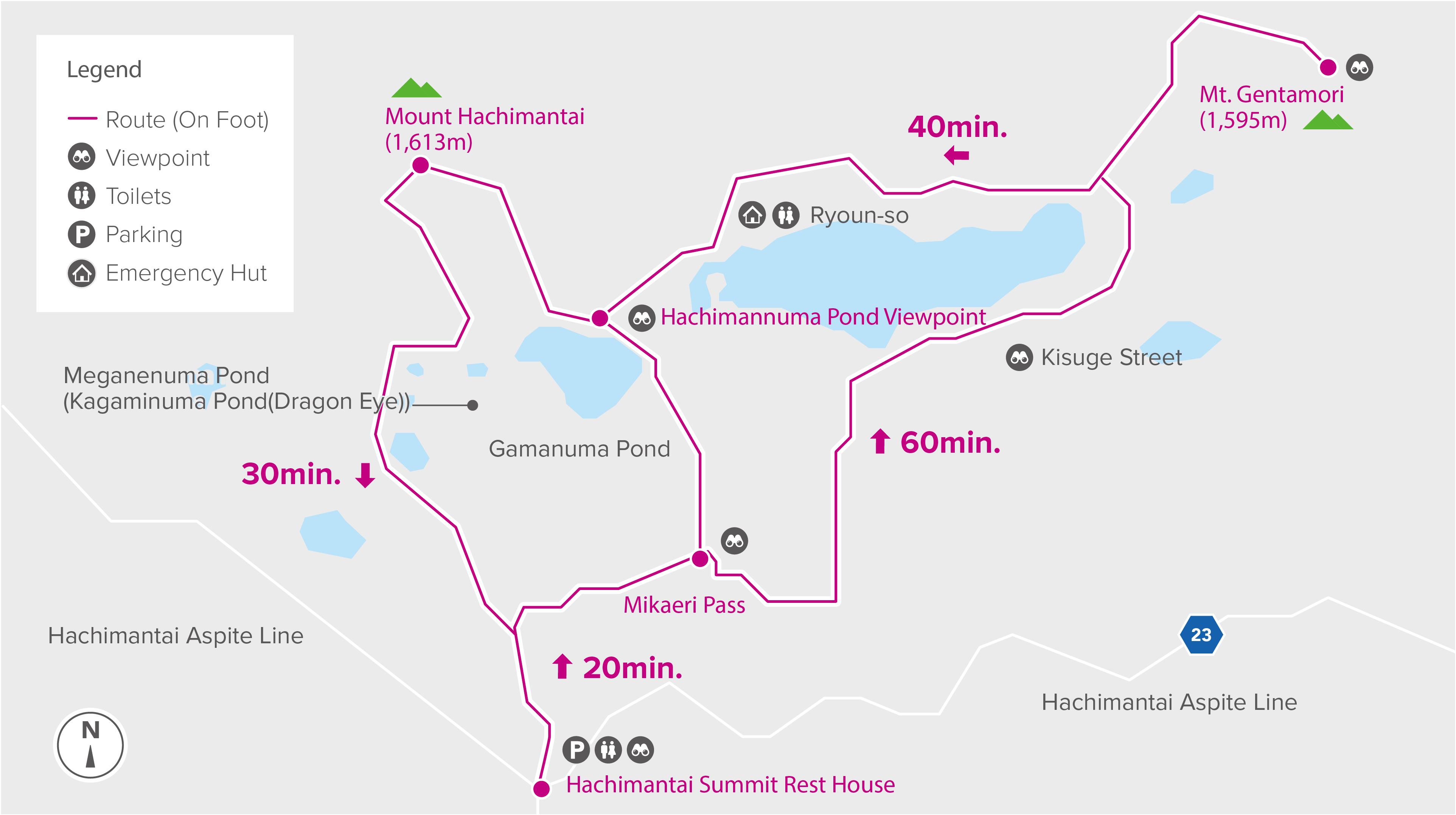Explore the diverse natural landscapes of Mount Hachimantai
The slopes of Mount Hachimantai are covered in fields of alpine flowers and forests of Maries' fir, and the mountain's volcanic lakes and ponds create striking vistas. The Hachimantai Nature Trail starts at the Hachimantai Summit Rest House, accessible by car and bus. The trail snakes between various pools and ponds before climbing to the summits of Mount Hachimantai and Mount Gentamori. On clear days, enjoy far-reaching views of Mount Chokai and Mount Iwate from viewpoints on Mount Gentamori.
You can access the trailhead via public transport from Morioka Station and Tazawako Station. Buses from Morioka Station are available from spring to autumn, and buses from Tazawako to Hachimantai are available from spring to autumn on Saturdays, Sundays, during the Obon holidays in August and during the fall colors in September and October. Check the exact dates and schedules in advance.
There is a parking area at Hachimantai Summit Rest House for visitors traveling by car.
